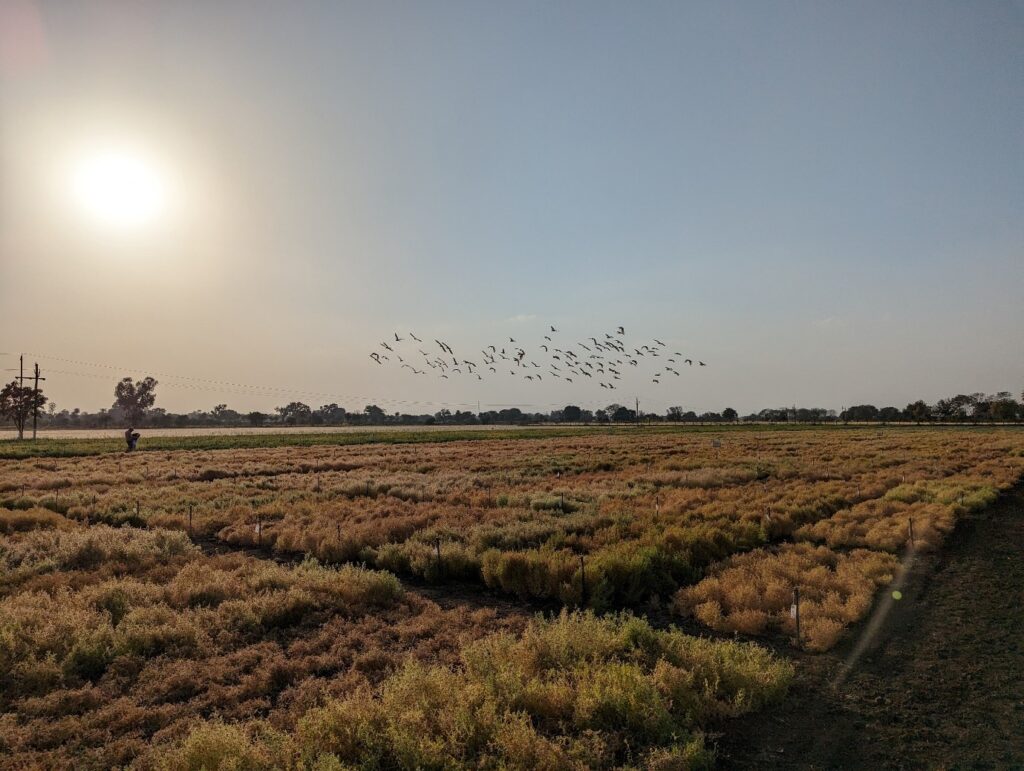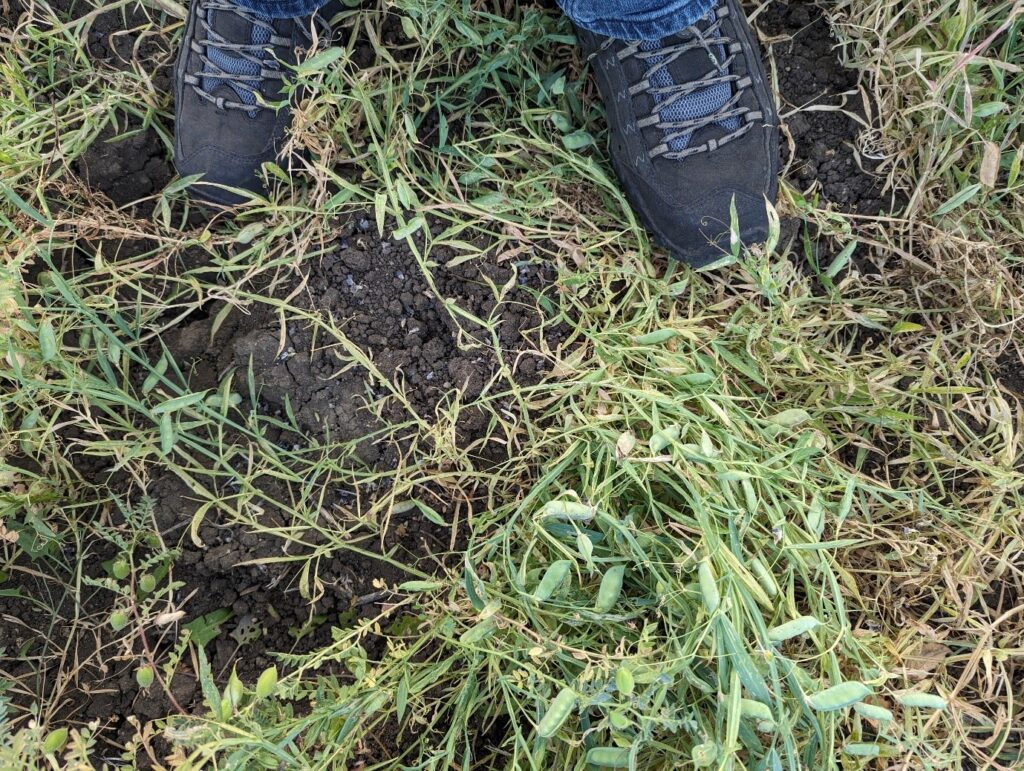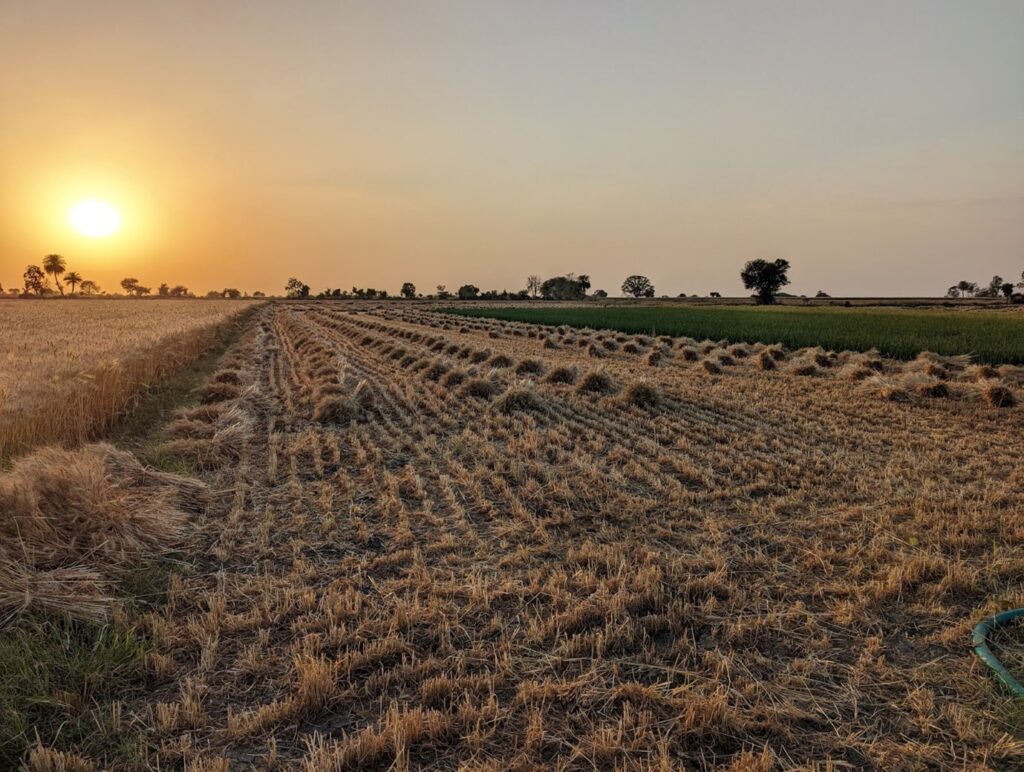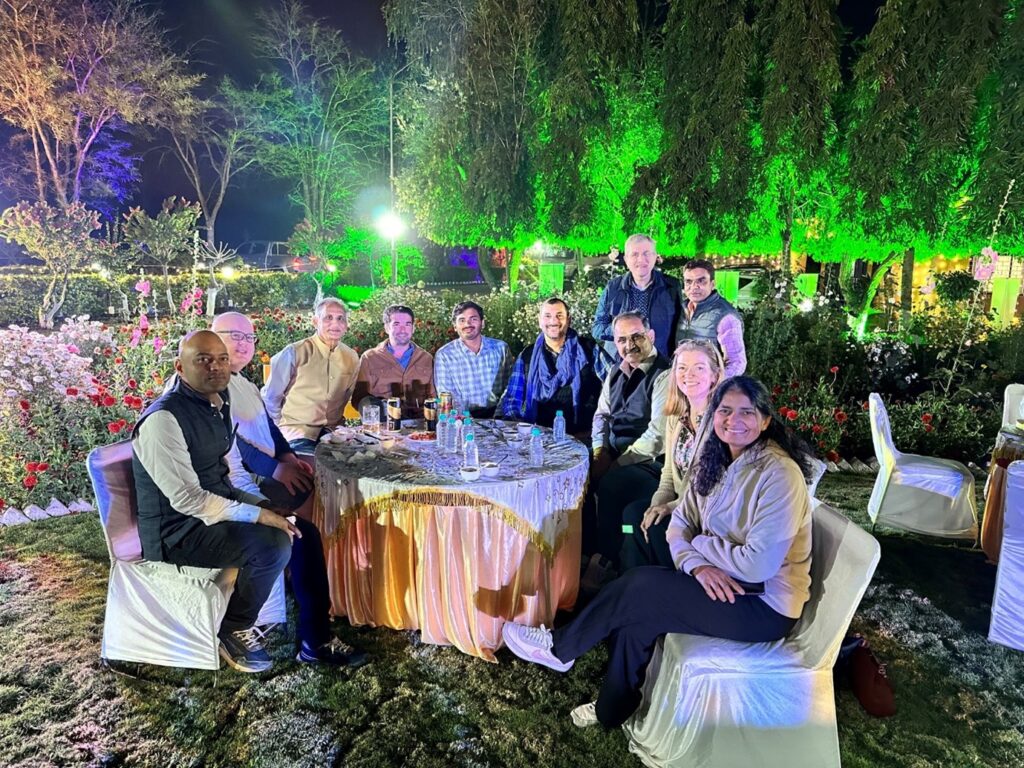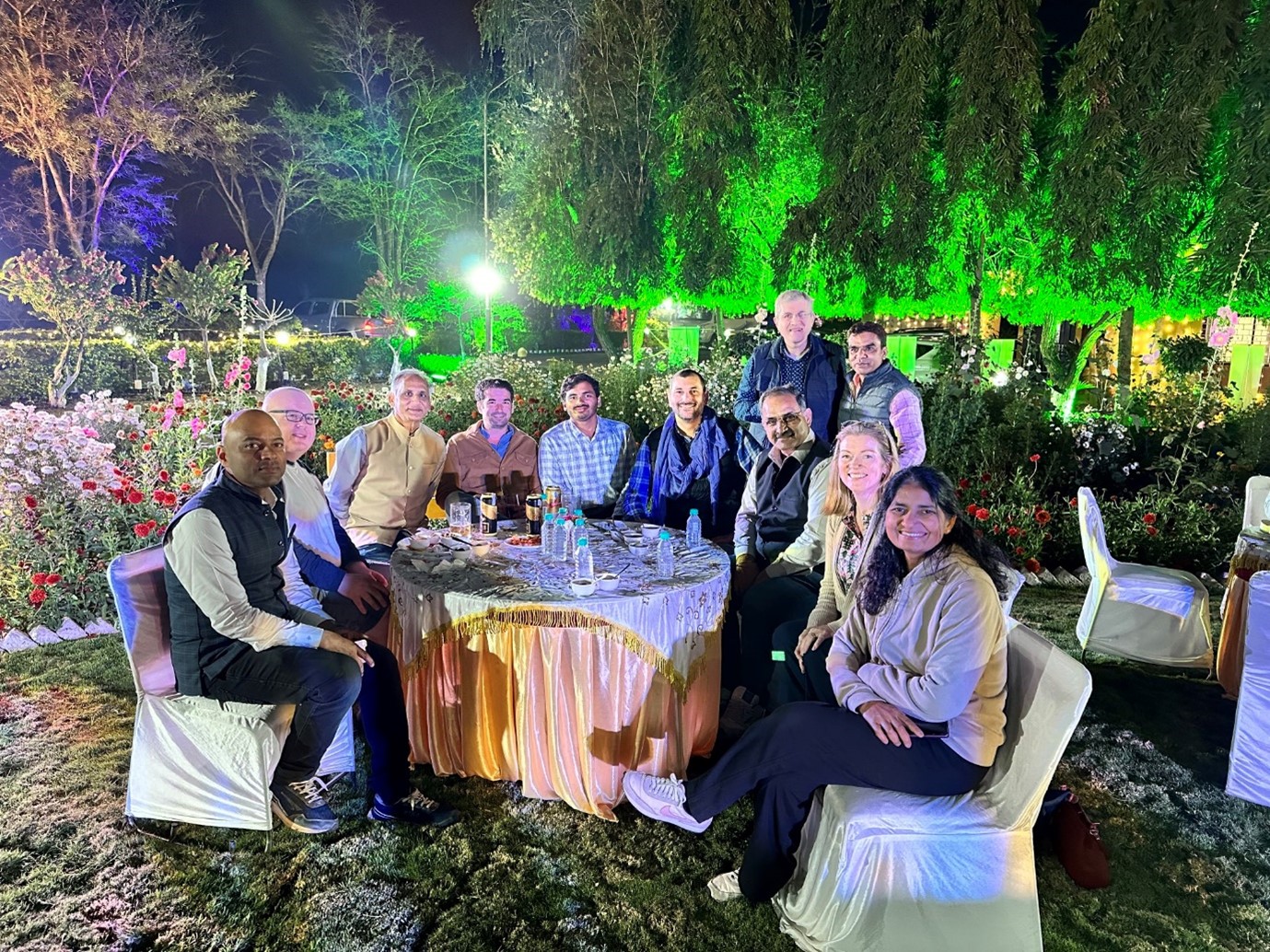After the BOLD GridScore training in New Delhi I was invited by ICARDA to attend their “Foundations” day to celebrate the opening of their new facilities at Amlaha near to Bhopal in India.
Paul Shaw and Sebastian Raubach (IBH and ICS)
We do a bit of work with ICARDA helping them with data science type work under the CWR, Templeton and now BOLD projects. Bhopal is a quick one-hour plane trip down from New Delhi, in fact the journey was quicker than the airport security… The day started with some opening addresses by CGIAR ICARDA directors and scientists within the new conference facility on site with around 50 guests from all over the ICARDA network including Hutton! An hour of short speeches on the importance of the work that ICARDA do in the dryland areas, focussing on durum wheat, legumes (lentil, chickpea and grasspea) and barley, was followed by tea and biscuits.
Next on the list for the day was the main event where around 600 farmers were invited to hear about the work ICARDA are doing in the area. The display of colour from the women farmers was amazing. The event was held outdoors in a huge tent that thankfully had a lot of large fans keeping the place cool. The temperature was not as hot as expected but still 27 degrees for a Scotsman in February is challenging!
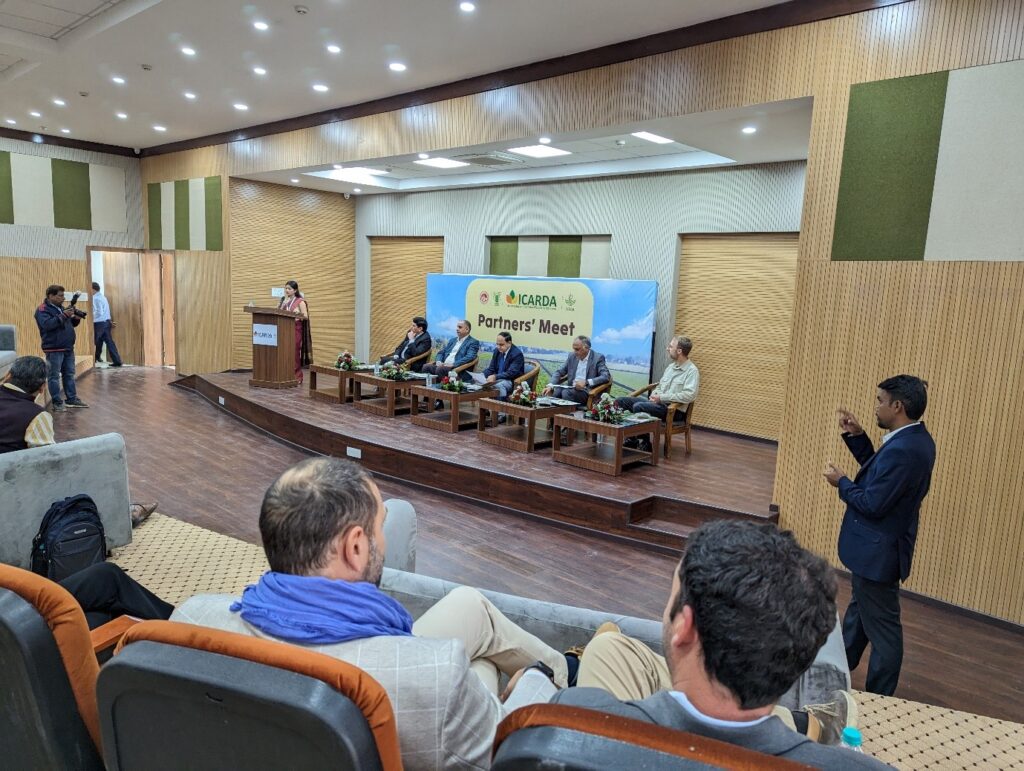
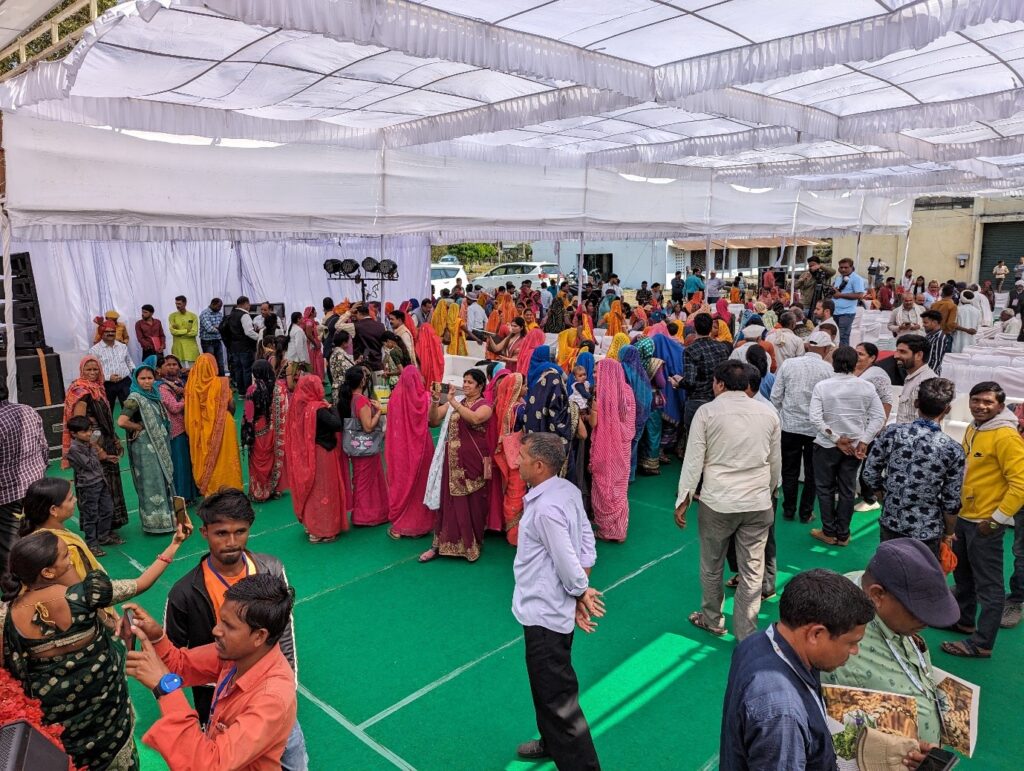
I like to sit at the back of events usually to see what was going on but when I did my ICARDA hosts ushered me down to the front, they were not taking no for an answer. I should have suspected something was up – more on that later. I was sitting in front of some local wheat farmers who were laughing at me for looking like a gangster with my bald head and sunglasses – it was bright I had no option!
Talks were given by ICARDA senior management then by some local farmers on the critical work that ICARDA are doing in developing climate adapted crops for India. We (Hutton) got a shout out in the speeches by the director of legume research in India (Dr Shiv Kumar Agrawal) and by ICARDA’s director of finance (Janet Muir) who thanked us for making the trip and our input into the projects we are collaborating on.
Mid way through the speeches it became clear why I was ushered down to the front… Those on the stage and the front row guests were then given a local turban called a saffar which was tied to their head in what can only be described as an involved process of tugging, head manipulation and tucking of around 4m of local fabric. This style is local to the Madhya Pradesh region of India where Amlaha is located. This process was much to the amusement of the famers who were teasing me before but they did come and talk to me and it was all in good humour!

After all the speeches were made local farmers were presented with new seeds from ICARDA to try on their farms. Its critically important to get buy in from local farmers to try new germplasm and most importantly spread the word of what new lines are available for the region.
The event ended with more food, something of a regular thing in India and then we went on to have a look at some of the field trials that were in the area.
ICARDA staff were explaining to me that there is a growing interest in barley in the area due to its tolerance to drought for both animal feed and human consumption. This part of India only gets a couple of months of rain per year and while that’s around 1200mm it comes quickly and within a restricted period. The main crop that is grown is the tetraploid durum wheat (Triticum durum) as it is also particularly hardy requiring only one irrigation per growing season.
The soils in the area are up to 8m deep and hold a lot of water during the rainy periods and crops like durum have adapted to getting roots down quickly to get as much water as they can. Normal bread wheat (Triticum aestivum) requires 4 or 5 irrigations which is considerably more when water is scarce. The area is famous in India for a durum landrace called ‘Sujata’ which is a selection from a landrace population and used in the production of some of the best chapatis. Indeed, fancy restaurants in New Delhi source flour from this specific region which really highlights the value chain for speciality and high value local varieties. So, the takeaway was there is increasing interest in using barley and ICARDA have been running trials in Egypt looking at replacing some of the wheat content of bread with barley which brings with it a number of benefits. Apparently 20% barley flour was the optimum point where people liked the bread and people were happy with the taste.


Next on the list was a tour of the ICARDA barley populations by barley breeder Narayana Devate. Narayana only had a short time to show me the work he has been doing with barley and I managed to get him signed up to our IBH seminar series before I was whisked away to look at more grasspea. It was a grasspea themed trip I suppose.
Paul Shaw
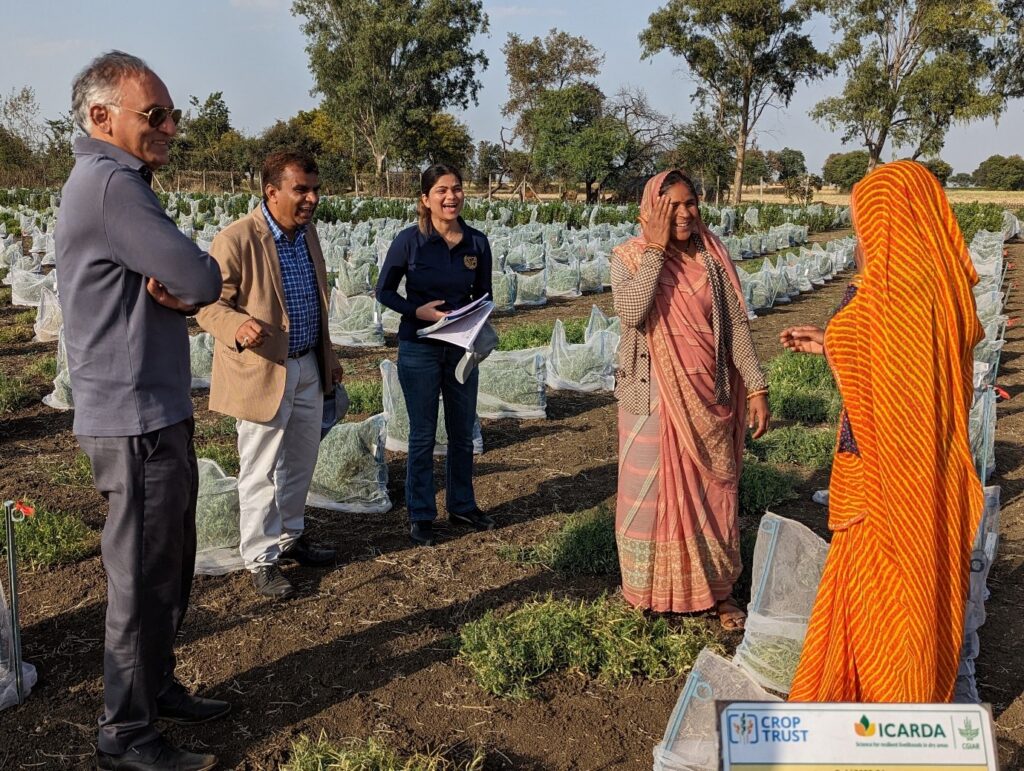
So on to grasspea again and we were able to talk to some local ICARDA field staff who were responsible for managing the crossing that was going on in the fields. It was a huge job that requires a lot of skill.
From the experimental fields at Amlaha we went to a local farmer who was growing grasspea as a trial for ICARDA. ICARDA provides local farmers with seed to try and help reduce the costs and potential risk for trying to grow the crop. The farm we were taken to was quite interesting as the two farmers who owned the land would not talk to each other at all and only communicated one at a time through our ICARDA hosts. I do not know what had happened in the past, but they were not friends that’s for sure.
After our trip to the farmers fields the sun was going down and it was time for dinner. We were all able to sit outside in the mild Indian evening and enjoy a few barley, durum wheat, grasspea and lentil based products! Next stop back to New Delhi and the homeward trip back to Scotland.
